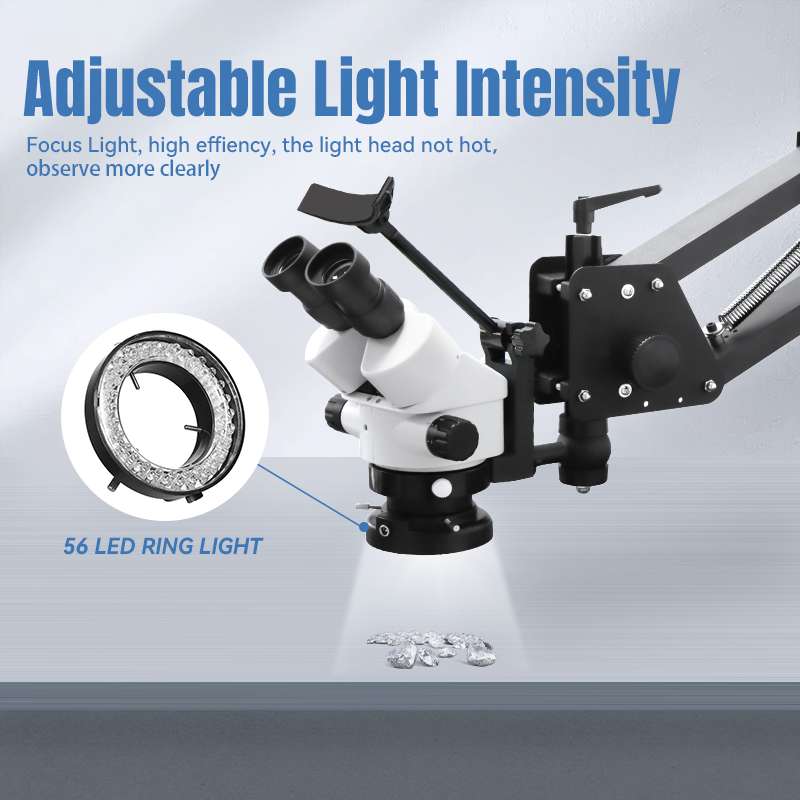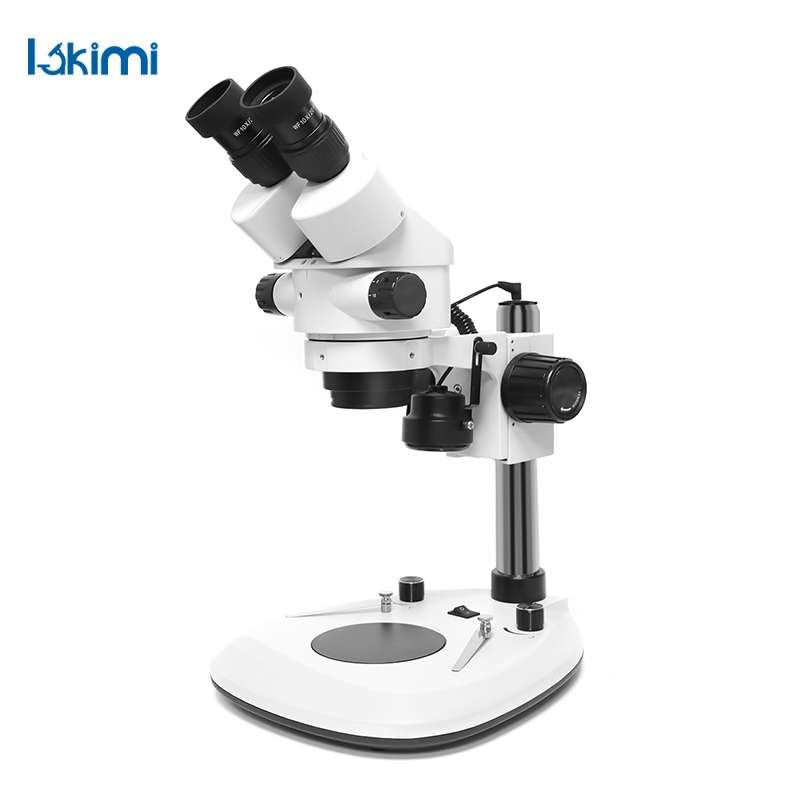Stereo microscope plays an irreplaceable role in the process of jewelry making. Stereo microscope can provide a three-dimensional imaging close to the naked eye view for jewelry makers, in order to help jewelry processors to complete a variety of fine jewelry processing processes. In addition, the use of stereo microscopes can also reduce the visual fatigue of jewelry makers to ensure that they carry out long hours of work. If you are looking to buy a stereo microscope for yourself, but don’t know where to start, this article can definitely help you!
If you want to buy a stereo microscope that is right for you, then you will need to break down the stereo microscope that you want to buy in a few different ways. It can probably be split into the magnification of the stereo microscope, the working distance of the microscope, the light source configuration of the microscope and other aspects to be analyzed.
1. Stereo microscope magnification
Generally speaking, the most suitable for processing jewelry stereo microscope magnification between 10 times and 40 times. However, this magnification is only an interval, there is another distinction to be made inside.
Basic magnification (10X-20X)
Adjust the magnification between 10X and 20X and you are ready for jewelry setting. You can clearly see the points of contact between the gemstone and the metal claws used to set it, ensuring that your stone is firmly set. In fact, at this magnification, you will have no problem soldering, buffing and polishing your jewelry.10x to 20x is a basic magnification, and if you are a novice jewelry maker, buying a stereo microscope with this magnification is perfectly adequate.
Medium Magnification (20X-30X)
20X to 30X is a more suitable for some higher precision work, such as you need to engrave some more detailed lines on the jewelry. This time the stereo microscope will be able to help you magnify some details on the surface of the jewelry.

High magnification (30X-40X and above)
This range of magnification is suitable for some of the very strict requirements for the accuracy of the operation. For example, micro-engraving or micro-setting, higher magnification can reduce your mistakes in the process of operation, to ensure that the level of craftsmanship of the product meets the highest standards. However, want to operate at such a high magnification, for the operator’s skill requirements are still relatively high.
In fact, for novice jewelry makers, too high a magnification is actually not appropriate. Although they are able to see more details clearly under high magnification field of view, at the same time, the field of view will become narrower and less suitable for operation. So, if you are a novice jewelry maker, you’d better consider your needs as well as the stereo microscope’s actual comfort level together, and finally come to buy a stereo microscope that is suitable for you.
2 Working Distance of Stereo Microscope
When picking a stereo microscope, the working distance is also a factor you must consider. So let’s first understand what is the working distance of the microscope. Simply put, the working distance refers to the distance between the lens of the stereo microscope and the piece of jewelry you are looking at. The most common microscopes have a distance between 80 mm and 200 mm, which you can adjust according to your actual needs.
In the process of jewelry making, a relatively long working distance allows the jewelry maker more room to maneuver. However, the most important thing is that it suits you. Therefore, you can buy a stereo microscope with a relatively large adjustment range of working distance, and then eventually adjust it according to your own needs.
3. Light source configuration
Light source is a very important determinant when you are observing an object, a good light source can let you have a bright field of vision, so that you can see more details clearly. Stereo microscope light source configuration can be roughly divided into three ways, respectively, LED light source, halogen light source and fluorescent light source.
LED light source

LED light sources are the most common type of light source used in commercially available stereo microscopes. This is due to the fact that the brightness of the LED light source can be adjusted, and its service life is relatively long, which makes it a very cost-effective choice. In addition, it is applicable to more scenes, almost applicable to all work scenes, such as jewelry setting, jewelry engraving and so on.
Halogen light sources
Halogen light source can provide a more natural light source, and suitable for processing jewelry and LED light source, halogen light source is more suitable for observing the details of the jewelry. However, halogen light sources have a relatively short lifespan, so they are not suitable for long working hours.
Fluorescent light source
One of the outstanding advantages of fluorescent light source is that it can provide a soft lighting condition, which can relieve visual fatigue to a certain extent. But its brightness compared to LED light source is slightly inferior, and it can adjust the brightness range is relatively small.
In summary, the choice of LED light has been able to meet most of the needs of novice jewelry makers. After all, there must be a reason why most stereo microscopes on the market use LED light sources as their illumination source.
In fact, the factors you need to consider when choosing a stereo microscope include more than just the above, you may also need to take into account your comfort level during the actual use of the stereo microscope, as well as whether or not the dimensions of the stereo microscope are suitable for your working desktop, and so on. In short, no stereo microscope is suitable for everyone, and you have to filter the right stereo microscope for you with your requirements in mind.

